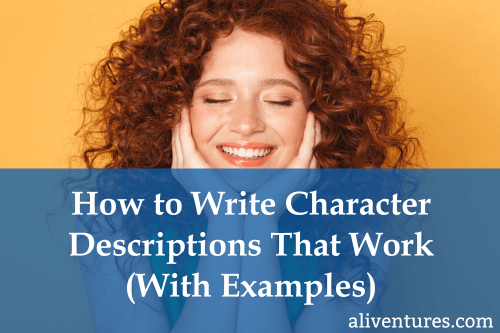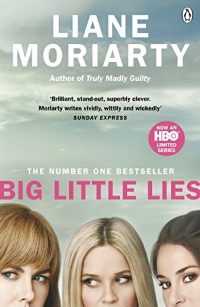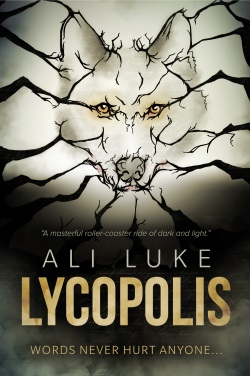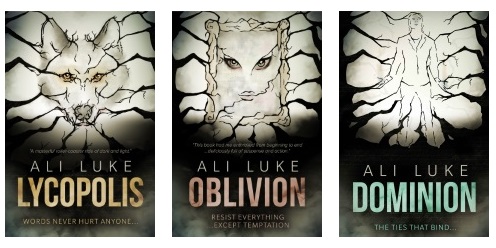How to Write Character Descriptions That Work (With Examples)

This post was first published in February 2017 and extensively updated in February 2025.
If you’re writing fiction, whether that’s a short story or a novel, you’ll generally need character descriptions. You want your readers to know what your characters look like – especially when their physical traits are relevant to the story, reveal their character, or reveal something about the person who’s observing them.
It might seem like an obvious way to describe your main character is to have them look in the mirror, like this:
Julia gazed into the bathroom mirror, assessing how she looked. Her hair was neatly parted and just skimmed the top of her shoulders. Her blue eyes were perfectly spaced, and her nose had a smattering of freckles – just right, she felt. The new shade of lipstick, a reddish-pink, went well with her top. But her cleavage was non-existent …
This might just work if you want to convey a character who’s particularly self-absorbed and who frets a lot about their appearance, but, otherwise, it’s a boring and – often – annoying way to introduce your character to your readers.
So what can you do instead? Firstly…
Keep Descriptions Short and Impactful
Many authors don’t describe much about their characters. Maybe we get a few key characteristics, especially if those are relevant to how the characters behave and interact with others (e.g. they’re unusually tall / short / skinny / fat / hairy / bald …) but we don’t have long descriptions of exactly how they look.
And that works well! Personally, as a reader, I’m not all that interested in what characters look like – I care who they are underneath the surface.
Their physical characteristics may well be important because they tell us more about who the characters are, or because they affect how other characters relate to them. But I don’t need to picture the character exactly how the author does: I just need the main points.
 Here’s a good example of a character’s appearance being described through the eyes of another character. In this description, from Liane Moriarty’s Big Little Lies, it matters that Celeste is so pretty because it affects how other characters relate to her, and reminds Jane of trauma in her own past:
Here’s a good example of a character’s appearance being described through the eyes of another character. In this description, from Liane Moriarty’s Big Little Lies, it matters that Celeste is so pretty because it affects how other characters relate to her, and reminds Jane of trauma in her own past:
Madeline’s expression changed. She beamed and waved. “Oh! She’s here at last! Celeste! Over here! Come and see what I’ve done!”
Jane looked up and her heart sank.
It shouldn’t matter. She knew it shouldn’t matter. But the fact was that some people were so unacceptably, hurtfully beautiful, it made you feel ashamed. Your inferiority was right there on display for the world to see. This was what a woman was meant to look like. Exactly this. She was right, and Jane was wrong.
Four Examples of Character Descriptions
We’ll dig into some great character descriptions from published novels and short stories, before going through some key tips for writing character descriptions of your own.
Example #1: Description of Ophelia in “The Summer People”
Ophelia was still tiny, even now. And as far as Fran could figure, Ophelia hadn’t changed much in most other ways: pretty, shy, spoiled, and easy to boss around. The rumor was her family’d moved full-time to Robbinsville from Lynchburg after a teacher caught Ophelia kissing another girl in the bathroom at a school dance.
– From “The Summer People”, in Get In Trouble, Kelly Link
This description is from a short story, so we don’t get a lot of physical details: we learn Ophelia is “tiny” and “pretty”. What’s more significant here is how the character description is filtered through Fran’s point of view (“as far as Fran could figure”) and how it incorporates Fran’s assessment of Ophelia’s character traits: “shy, spoiled, and easy to boss around.”
Example #2: Description of Leon in The Flatshare
So, naturally I get curious and google him. […] It’s a relief to see that he’s not my type at all, which will definitely simplify things – if Justin did ever meet Leon, for instance, I don’t think he’d see him as a threat. He’s got light-brown skin and thick, curly hair long enough to be pushed back behind his ears, and he’s way too gangly for me. All elbows and neck, you know the type. He looks like a nice guy, though – in every photo he’s doing this sweet lopsided smile that doesn’t seem at all creepy or murderous, though actually if you look at a picture with that idea in mind, everyone starts to look like an axe-wielding killer, so I try to put the thought out of my head. He looks friendly and unthreatening. These are good things.
– From The Flatshare, Beth O’Leary
In The Flatshare, Tiffy (driven to desperation by the state of the London rental market) is about to enter an unusual flatshare with a man who she hasn’t yet met. She’ll have the bed at night when he’s at work; he’ll sleep there in the day while she’s at work. So the first description we get of Leon, through Tiffy’s eyes, is when she finds him on Facebook. We get a reasonable amount about his physical appearance … but we also see how Tiffy responds to how he looks (and her nervousness about the unusual flatshare arrangement is reinforced: “he doesn’t seem at all creepy or murderous”).
Example #3: Description of Francis in The Secret History
The third boy was the most exotic of the set. Angular and elegant, he was precariously thin, with nervous hands and a shrewd albino face and a short, fiery mop of the reddest hair I had ever seen. I thought (erroneously) that he dressed like Alfred Doughlas, or the Comte de Montesquiou: beautiful starchy shirts with French cuffs; magnificent neckties; a black greatcoat that billowed behind him as he walked and made him look like a cross between a student prince and Jack the Ripper. Once, to my delight, I even saw him wearing pince-nez. (Later, I discovered they weren’t real pince-nez, but only had glass in them, and that his eyes were a good deal sharper than my own. ) Francis Abernathy was his name. Further inquiries elicited suspicion from male acquaintances, who wondered at my interest in such a person.
– From The Secret History, Donna Tartt
The narrator of The Secret History, Richard Papen, is at an exclusive college, Hampden, keen to be able to study ancient Greek with the enigmatic professor Julian Morrow. Refused (at first), he observes Morrow’s pupils from a distance, focusing on how they look and particularly on what they’re wearing. We see Richard’s keen, perhaps borderline obsessive, interest in them coming through, as well as getting a sense of these students as a rarified, slightly eccentric group.
Example #4: Description of Esha in Elder Race
[Esha’s] skin was pale like most of her people, greenish white and heavily freckled with blue about the bridge of her nose and cheekbones. She had a hard, square chin and her straw-coloured hair had obviously been trimmed with the aid of a bowl. She was shorter than Lyn, compact of frame, wearing a wayfarer’s layers of wax-cloth and weft, with a cuirass of hard scales all over it in case of trouble.
– From Elder Race, Adrian Tchaikovsky
We’ve already been introduced to the protagonist, Lyn (short for Lyness), and to the world she lives in at this point midway through the first chapter. The description of Esha gives us more sense of the different peoples of this world, and of how she differs from the higher-class Lyn.
From these examples of character descriptions, you’re probably already getting a sense of what works well. Let’s take a closer look at some practical tips.
What to Do (and What to Avoid) When Describing Characters
When you’re giving physical descriptions of your characters:
- Don’t give us a huge chunk of description all at once. This is a bad idea not only because it halts the forward momentum of your narrative but also because the reader’s unlikely to remember most of it anyway!
- Try describing one character through another character’s eyes. This can help reveal a lot about the person looking at them as well as the one who’s being observed, and it works very well if you’re using a third-person limited perspective.
- Avoid having a first-person viewpoint character describe themselves in painstaking detail. Instead, bring in key characteristics that are relevant to who they are (e.g. they’re overweight and trying to shed excess pounds – or they’re unusually tall / short and it bothers them).
- Choose two or three key characteristics to focus on, especially unusual ones. Eye colour isn’t generally worth mentioning unless it’s unusual and/or significant to the plot (e.g. Harry Potter’s green eyes are both unusual and very like his mother Lily’s, which is important in how Snape relates to him). If you talk about a character’s eyes, we may assume the viewpoint character is staring into them … which may or may not be what you want to imply.
- With any kind of description, word choices matter a lot. There’s a huge tonal difference between “long yellow hair” and “flowing blond hair” and “long golden locks” … even though all of those could describe exactly the same thing. Think about specificity, too: do you definitely want to write “dark hair” or would “brown hair” or “black hair” give a better picture?
- Consider how much description you actually need. If you’re writing about a minor character, we may well only need a few words to get enough sense of what that character looks like.
What about giving us a description of a character’s personality? I think it’s best to let that come out in the story as much as possible. You can show, rather than tell, when you want to let the reader know that a character is bad-tempered or self-absorbed or kind-hearted. All of this could come across in body language, facial expressions, dialogue, and other characters’ interpretations of these.
The exception here is if you want to characterise the person who’s looking at them. The personality traits your POV character picks up on can say something about what type of person they are, too. Let’s say John is thinking about Jane’s kind-hearted nature (rather than, say, her total inability to ever be on time) – that might suggest a generosity to John, that he sees the best side of people.
How I Write Character Descriptions
 Description is the thing I struggle with most in writing, so I try to get away with a fairly minimal amount of it!
Description is the thing I struggle with most in writing, so I try to get away with a fairly minimal amount of it!
I’ll give you a few examples from my first novel Lycopolis, though, and explain why I wrote them in the way I did – hopefully, you’ll find this helpful as you think about how to describe your characters in a way that engages the reader’s imagination.
Example #1:
Kay sipped uncertainly at her hot chocolate. Seth was taller than she’d imagined him. His blond hair hung perfectly, parted in the middle to fall to his chin, just like his profile picture on Messenger. She’d brushed her own hair into fierce plaits as usual, but the wind had whipped strands of it loose.
This is the very first paragraph of the novel. Kay’s the viewpoint character, and the reader hasn’t met her or Seth yet – so I’m trying to get in a bit of description of both of them, and hint at the backstory between them (e.g. “taller than she’d imagined him” – she knew Seth already but hadn’t met him in person before; she’s clearly spent at least a bit of time imagining what he looks like). There are some basic physical details (Seth is tall with longish blond hair; Kay has plaits).
Example #2:
A few paragraphs later, we’ve got:
She lifted her head, and met his eyes. They were a greyish blue, like stonewashed denim, like the pebbles on the beach back home.
I’m not generally interested in character’s eye colour. But I’m hinting here not only at Kay’s crush on Seth – she’s noticing his eyes – but also at her homesickness (by this point, we know she’s a first-year student at Oxford).
Example #3:
Later on, we get a description of Seth from a different perspective, 14-year-old Edwin:
Seth was pretty much how Edwin had imagined from his Messenger profile picture. He was tall, and his hair was cut longish and floppy without looking gay. He wore dark cords and a grey denim jacket over a shirt which, unlike Edwin’s sweater, didn’t seem to have spent the last few days in a heap on the floor.
“Hey,” Edwin said, and found himself suddenly nervous. Did he look sort of stupid, with collar-length hair and studded bracelets and head-to-toe black?
Again, Edwin knows Seth online, but this is the first time he meets him in real life. Unlike Kay, he did picture Seth as tall – he’s rather more in awe of Seth than Kay is. I’ve got comparison going on again: with Edwin’s rather less careful attitude to clothes, for instance. And just in case Edwin hasn’t reminded the reader recently enough that he is Properly Goth, we get a quick description of what he’s wearing (and how insecure he is about it).
Many authors use character descriptions like I do: as a way to hint at and establish relationships between characters and/or to reveal something about the viewpoint character. I think this makes descriptions a lot more interesting and engaging: they’re not just about painting a picture (lovely though that can be!), they’re about revealing more of the story.
Get Help Editing Your Story
If you’re at the editing stage, make sure you download my free editing checklist for help with descriptions and more. (It’s the “Quick Reference” version of my full editing guide, Editing Essentials.)
Just pop your email address in below:
You’ll also get access to two sets of writing prompts, free worksheets, and my weekly newsletter.
About

I’m Ali Luke, and I live in Leeds in the UK with my husband and two children.
Aliventures is where I help you master the art, craft and business of writing.
Start Here
If you're new, welcome! These posts are good ones to start with:
Can You Call Yourself a “Writer” if You’re Not Currently Writing?
The Three Stages of Editing (and Nine Handy Do-it-Yourself Tips)
My Novels

My contemporary fantasy trilogy is available from Amazon. The books follow on from one another, so read Lycopolis first.
You can buy them all from Amazon, or read them FREE in Kindle Unlimited.

Hi Ali.
I’m really interested in reading your short story without any dialogue tags etc…
“I’ve just written a short story that consists entirely of dialogue – no dialogue tags, no action beats, nothing – and neither of the characters is described at all.”
How on earth would you do that?
With difficulty! 😀 I can’t publish it here at present as I’ve submitted it for a competition — I’ll let you know how it goes!
Thank you so much for posting this! It helped me know that I’m kind of on the right track.
I like to describe my characters from the other characters’ points of view. Like you said, it gives insight into both of the characters and how they see the world.
The MC in the book I’m trying to write at the moment (a bit conveniently) is very observant. She not only observes physical characteristics, but she watches body language and listens to every word the other characters may say. I’m hoping that this will give readers a good idea of hers and the others’ personalities.
I’m only sixteen but I LOVE writing. I’m hoping that sometime in the future I will be able to publish.
Thank you again for posting this! It really helped!
Yay! An observant MC definitely gives you an edge here. 🙂
There’s never been a better time (in my opinion, at least!) to be an up-and-coming young writer. Once you feel that your writing is of publishable standard, you’ve got so many options with publishing, from the big traditional publishing houses to quirky independent presses to striking out alone as an independent author, publishing via ebooks and print-on-demand. Best of luck with wherever writing takes you! 🙂
Let’s get into more depth about description. There are many ways to tackle description, but if you want potency, description isn’t enough. Look, the readers don’t care if the character is blonde, pretty, old, wearing a shawl–UNLESS their description has heavy emotional threads. So how do you mold your descriptions to soak up the essence of a character’s being–how do you write a character that you can FEEL? Look at Fahrenheit 451, when Guy’s foot finds his wife’s empty pill bottle.
” Two moonstones looked up at him in the light of his small hand-held fire; two pale moonstones buried in a creek of clear water over which the life of the world ran, not touching them.”
‘Mildred’!
“Her face was like a snow-covered island upon which rain might fall, but it felt no rain; over which clouds might pass their moving shadows, but she felt no shadows. There was only the signing of the thimble-wasps in her tamped-shut ears, and her eyes all glass, and breath going in and out, softly, faintly, in and out her nostrils, and her not caring whether it came or went, or went or came.”
Profound.
Absolutely profound.
It was more than “she was lying on the floor, pale, hardly breathing, and half dead”–more than “Oh dear! Her eyes are glossy!”–no, he used scenery. I recommend challenging yourself to use the same technique. For example, if a character is being deemed guilty before a judge, what scenery would emulate the same dread? Drowning, perhaps? Okay, let’s try that.
“When he said it–the ‘G’ word–when those pink-ish mudcracks parted into words, became quenched with judgement, I knew he had peeled the flood gates open. But I hadn’t known the gushing power of his voice could swallow me whole, jab watery pins to my eardrums, force feed itching screams down my lungs. My fingers wanted to claw through the waves–but even if I tried, my wrists would be fastened to the wet chains wrapped around my body.”
(note: Admittedly, my writing isn’t fantastic and this blurb reeks of my novice skills, but I think it was good to practice.) 🙂
Thanks for the fantastic examples, Charity! I really struggle with doing metaphor well, but I think this can be a great technique to try. 🙂
“He was tall, and his hair was cut longish and floppy without looking gay.”
I’m sorry, but I just can’t help but wonder what this means? It sounds a bit like an insult, or like it’s being used as a slur, is that what we’re supposed to get from that particular character’s description of Seth?
Probably rather unclear out of context, sorry! It’s from 14-year-old Edwin’s point of view, and to Edwin, yes, “gay” is seen as something of an insult. It got used like that a lot when I was at school here in the UK (“your bag is gay…” “ugh, we have extra maths, that’s so gay…” that kind of thing).
(Please don’t take the character’s views / language as representative of the author’s here!) 🙂